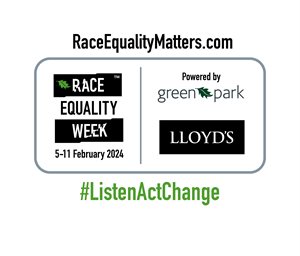Staffnet+ >
Race Equality Week 2024: Day 1 – Microaggression
Race Equality Week 2024: Day 1 – Microaggression
 Do you ever hear someone say something inappropriate in the workplace, that would be considered a microaggression but wait for someone else to speak up?
Do you ever hear someone say something inappropriate in the workplace, that would be considered a microaggression but wait for someone else to speak up?
What is a Microaggression?
‘A microaggression is a subtle, often unintentional, form of prejudice. It often takes the shape of an offhand comment, an inadvertently painful joke, or a pointed insult.’ (Psychology Today)
Here are some examples:
- “I don’t see colour.”
- “There is no need to be so angry.”
- “You are so articulate.”
- “Can I touch your hair?”
- “Where are you really from?”
- “I can’t pronounce your name; can I call you X for short?”
“For me microaggressions are like death by 1,000 cuts. It's the accumulation of those instances across weeks, months and years.” Mark Lomas, Head of Culture, Lloyd’s Bank.
“These everyday occurrences may on the surface appear quite harmless, trivial, or be described as "small slights," but research indicates they have a powerful impact upon the psychological well-being of marginalized groups and affect their standard of living by creating inequities in health care, education, and employment.” - Derald Wing Sue Ph.D. Professor of Psychology and Education, Columbia University
In a recent poll, 83% of respondents said they experience microaggressions in the workplace. Yet, only 16% said microaggressions are regularly or quite often called out by colleagues.
69% said it is because they don’t know what to say and
59% said people don’t know how to.
It’s up to allies to become active and not those impacted by the microaggression. This can be done in a non-confrontational way by simply asking, “What did you mean by that?” Or “Can I check what you mean by that?” or using another non-confrontational question phrase that you are more comfortable with.
This is to give the person the opportunity to reflect, or at times correct, clumsy, inappropriate or even harmful language. It also enables everyone to be aware of what microaggressions are. This will create a culture that will enable meaningful change.
See #ItsNotMicro
-
Action – 2 Mins
At work it is crucial that when we see or hear a microaggression, we do not remain bystanders but become active allies.
- Encourage your organisation to sign up to REM’s #ItsNotMicro, which aims to normalise the calling out of microaggressions.
- Take time to learn more about microaggressions. See some helpful resources below.
- Think about the impact of any biases you may have and the language you may use.
- Call out/deal with microaggressions – some tips: (American Psychological Association):
- Plan ahead - think about ways you could intervene.
- Tailor your approach to the situation.
- Speak for yourself, reflect your own perspective and feelings.
- Target the behaviour, not the person - avoid calling a perpetrator racist or attacking their character.
- Consider circling back – it may be more effective or safer to say something behind closed doors.
- Seek outside support.
- Ask the person who experienced the microaggression if they’re OK.
- Try using micro-affirmations - inclusive and kind actions. e.g., ask colleagues how they are doing, nodding, and smiling, making eye contact, asking others for their opinion, and giving credit to other people’s ideas. See additional resources for more
Additional Resources
Video Resources
Race Equality Matters Resources